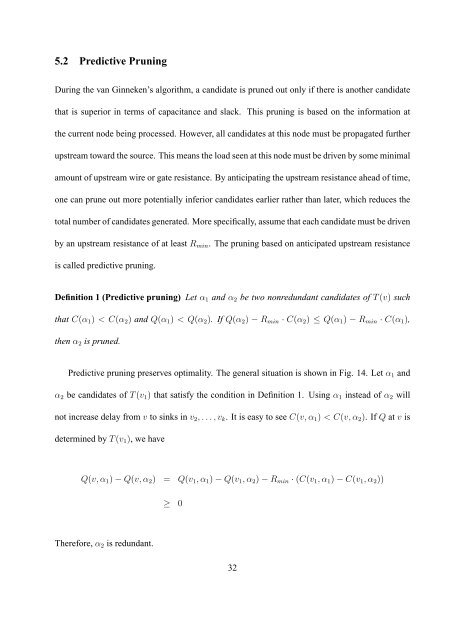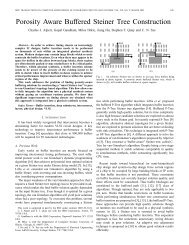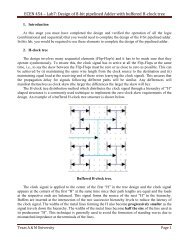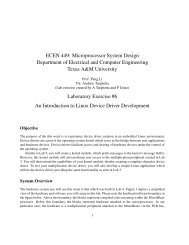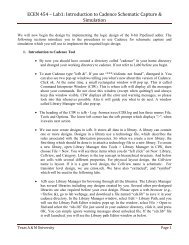Buffer Insertion Basics - Computer Engineering & Systems Group ...
Buffer Insertion Basics - Computer Engineering & Systems Group ...
Buffer Insertion Basics - Computer Engineering & Systems Group ...
Create successful ePaper yourself
Turn your PDF publications into a flip-book with our unique Google optimized e-Paper software.
5.2 Predictive Pruning<br />
During the van Ginneken’s algorithm, a candidate is pruned out only if there is another candidate<br />
that is superior in terms of capacitance and slack. This pruning is based on the information at<br />
the current node being processed. However, all candidates at this node must be propagated further<br />
upstream toward the source. This means the load seen at this node must be driven by some minimal<br />
amount of upstream wire or gate resistance. By anticipating the upstream resistance ahead of time,<br />
one can prune out more potentially inferior candidates earlier rather than later, which reduces the<br />
total number of candidates generated. More specifically, assume that each candidate must be driven<br />
by an upstream resistance of at least R min . The pruning based on anticipated upstream resistance<br />
is called predictive pruning.<br />
Definition 1 (Predictive pruning) Let α 1 and α 2 be two nonredundant candidates of T(v) such<br />
that C(α 1 ) < C(α 2 ) and Q(α 1 ) < Q(α 2 ). If Q(α 2 ) − R min · C(α 2 ) ≤ Q(α 1 ) − R min · C(α 1 ),<br />
then α 2 is pruned.<br />
Predictive pruning preserves optimality. The general situation is shown in Fig. 14. Let α 1 and<br />
α 2 be candidates of T(v 1 ) that satisfy the condition in Definition 1. Using α 1 instead of α 2 will<br />
not increase delay from v to sinks in v 2 ,...,v k . It is easy to see C(v,α 1 ) < C(v,α 2 ). If Q at v is<br />
determined by T(v 1 ), we have<br />
Q(v,α 1 ) − Q(v,α 2 ) = Q(v 1 ,α 1 ) − Q(v 1 ,α 2 ) − R min · (C(v 1 ,α 1 ) − C(v 1 ,α 2 ))<br />
≥ 0<br />
Therefore, α 2 is redundant.<br />
32


